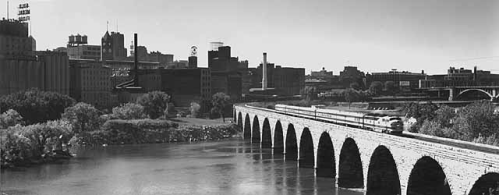Cuddle a Puppy this Valentine’s Day at the Meet Minneapolis Visitor Center
 Monday, February 10, 2020 at 4:27PM |
Monday, February 10, 2020 at 4:27PM |  Kim Eslinger |
Kim Eslinger | 
100% of Proceeds benefit Midwest Animal Rescue & Services
Get ready to cuddle up with cuteness on Valentine’s Day at the 5th annual Meet Minneapolis Puppy Cuddle on Friday, February 14, from 11 a.m. to 4 p.m., at the Meet Minneapolis Visitor Center, located at 505 Nicollet Mall, Suite 100, directly across from the METRO Nicollet station. A $5 donation will provide three minutes of cute, snuggle time with a plethora of puppies while also supporting Midwest Animal Rescue and Services™ (MARS). Cash, check and credit cards will be accepted at the event.
MARS is committed to finding homes for animals that were once lost, left behind and forgotten. Once in their care, companion animals are vaccinated, microchipped, and spayed or neutered. Special attention is provided for those animals that need additional time and medical care before going to a new home. For more information, visit www.midwestanimalrescue.org.
ABOUT MEET MINNEAPOLIS VISITOR CENTER
As part of Meet Minneapolis, Convention and Visitor Association, the Meet Minneapolis Visitor Center is the official visitor center for Minneapolis, located in the CenterPoint Energy building on Nicollet and 5th Street. Staff is available to answer questions, share visitor maps and resources about things to do in Minneapolis and the surrounding area. The Visitor Information Center in the Minneapolis Convention Center also is available to provide similar information to visitors and convention attendees.
Meet Minneapolis is a private, not-for-profit, member-based association. It actively promotes and sells the Minneapolis area as a destination for conventions and meetings, works to maximize the visitor experience and markets the city as a desirable tourist destination to maximize the economic benefit to the greater Minneapolis area. Meet Minneapolis is accredited by the Destination Marketing Accreditation Program (DMAP) of Destinations International.
CONNECT WITH MEET MINNEAPOLIS!
Online: www.minneapolis.org
On Facebook: www.facebook.com/meetminneapolis
On Twitter: http://twitter.com/meetminneapolis
On Instagram: www.instagram.com/meetminneapolis
Watch: You’ve never met a place quite like this














































